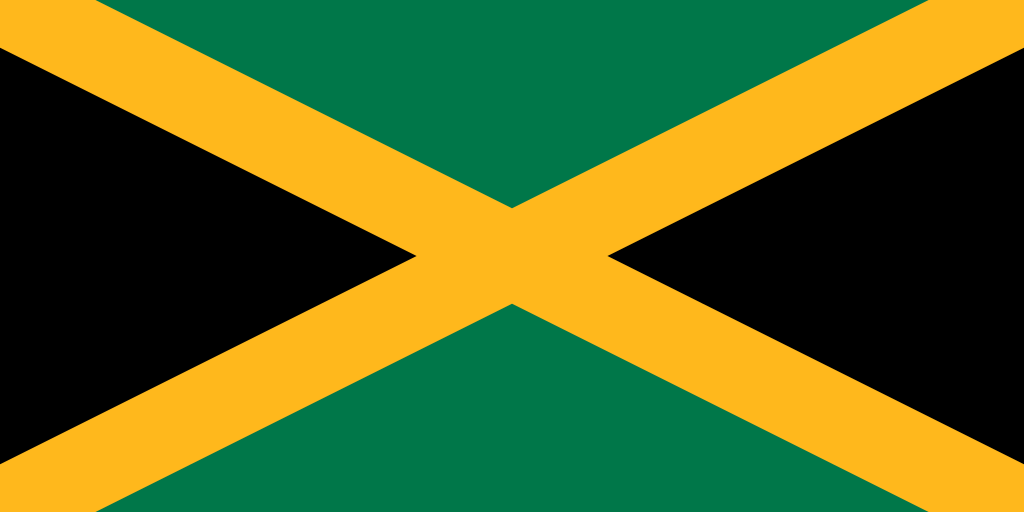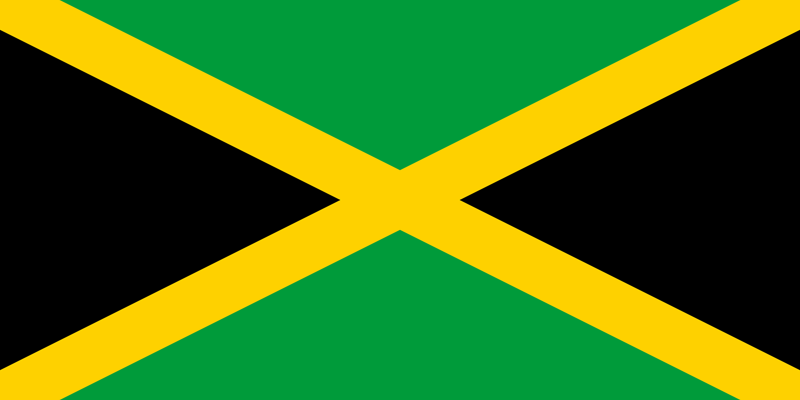When it comes to national flags, colors play a crucial role in representing the country’s culture, heritage and identity. Each color has a meaning and symbolism attached to it, and the choice of colors in a national flag is no coincidence. From red, white and blue to green, gold and black, the colors in flags hold significant importance and are often deeply ingrained in a country’s history and traditions.
For instance, the color red in flags is often associated with courage, blood, and sacrifice. Red can symbolize triumph, passion, and strength. Red is a popular color in national flags, such as the United States, United Kingdom, and Denmark. Blue, too, often finds its way into flags because it represents stability, loyalty, and trustworthiness, like in the flags of France, Greece, and Israel.
Understanding what these colors represent in flags is not only important in understanding different countries and cultures but also in appreciating the craftsmanship that goes into creating these iconic symbols. The subtle nuances of color choice and symbolism can make or break the overall impact of a national flag. And while the colors might seem simple at first glance, there is a world of meaning behind every hue and shade. So, next time you come across a national flag, take a moment to appreciate the thought and consideration that went into its creation.
Red: Symbol of Courage, Revolution, and Bloodshed
Red is a bold and striking color that has been used prominently in flags throughout history. It is typically associated with strong emotions such as passion, love, and anger. In the context of flags, red is a symbol of courage, revolution, and bloodshed.
The color red has been used to represent courage throughout history. In many cultures, it is seen as a symbol of bravery and strength. This is why it is often used in military flags as well as in flags of countries that have a history of fighting for their independence.
Red is also closely associated with revolution. During times of political upheaval, red flags are often flown as a symbol of resistance and rebellion. For example, the red flag was famously used during the French Revolution as a symbol of the blood that was shed in the fight for liberty and equality.
However, the color red can also be a symbol of violence and bloodshed. This is because the color is closely associated with the color of blood. In many countries, red is used in flags to honor those who have fought and died for their country. For example, the red in the American flag represents the bloodshed during the Revolutionary War and the Civil War.
Other Meanings of Red in Flags
- Love and Romance – The red in the flag of Japan represents the rising sun and is also said to symbolize the love and passion of the Japanese people.
- Communism – The red in the flag of the Soviet Union was a symbol of the communist revolution.
- Warning – The red in many national flags is also used as a warning. For example, the red in the Chinese flag represents the communist revolution and serves as a warning to enemies.
Examples of Flags with Red
The color red is used in a wide range of national flags around the world. Here are a few examples:
| Country | Flag | Meaning of Red |
|---|---|---|
| United States |  |
Bloodshed during the Revolutionary War and the Civil War |
| China |  |
Communist revolution and a warning to enemies |
| Japan |  |
Rising sun and symbolizes the love and passion of the Japanese people |
As you can see, the color red is a powerful symbol in flags around the world. Whether it represents courage, revolution, or bloodshed, it is a color that evokes strong emotions and has a rich history and meaning behind it.
Blue: Symbol of Loyalty, Trust, and the Sea
Blue is a popular color in many national flags, and it is often associated with loyalty, trust, and the sea. Here’s an in-depth look at what blue symbolizes in flags:
- Loyalty: Blue is often used to signify loyalty, fidelity, and steadfastness. In some flags, such as the American flag, the blue represents the loyalty of the nation to its citizens, while in others, it symbolizes the loyalty and devotion of the people to their government.
- Trust: Blue is also associated with trust, confidence, and honesty. This is reflected in the use of the color in flags such as those of the European Union or the United Nations, where it represents the trust and cooperation between member states.
- The Sea: Blue is strongly connected to the sea, as it is the color of the ocean and the sky. This makes it a popular choice for flags of countries with a maritime history or strong ties to the sea, such as Greece or Sweden. In these flags, the blue not only represents the ocean but also the bravery and adventurous spirit of those who sail on it.
Here’s a list of some of the national flags that prominently feature the color blue:
| Country | Flag | Explanation |
|---|---|---|
| United States | The blue represents loyalty and devotion | |
| France | The blue represents liberty and the willingness to fight for it | |
| United Kingdom | The blue represents loyalty and the ocean | |
| Greece | The blue represents the ocean and bravery | |
| Sweden | The blue represents the ocean and the sky |
Blue is a versatile and meaningful color, reflected in its frequent use in flags around the world. Whether it symbolizes loyalty, trust, the sea, or something else entirely, it remains a powerful and enduring symbol of identity and national pride.
Green: Symbol of Hope, Nature, and Prosperity
Green is one of the most commonly used colors in flags, and it is usually associated with hope, nature, and prosperity. This color is often found in countries with lush green landscapes, such as Ireland and Brazil. Let’s take a closer look at what green represents in flags:
- Hope: Green is often associated with new beginnings and a fresh start. It symbolizes hope for a brighter future and is often used to represent the growth of a nation.
- Nature: Green is the color of plants and trees, and is closely associated with the natural world. It is often used to represent the importance of preserving the environment and the need for sustainability.
- Prosperity: In some cultures, green is associated with wealth and prosperity. This is because a bountiful harvest or a successful crop is often depicted in shades of green.
Green is also associated with peace and tranquility. It is believed to have a calming effect on the mind, and is often used in healing and meditation practices. Green is a versatile color that can be used to represent a wide range of values and ideals.
Here’s a table showing some of the most notable flags that use the color green:
| Country | Flag | Symbolism |
|---|---|---|
| Ireland |  |
The green represents the Gaelic tradition, while the orange represents the Protestant minority and the white symbolizes peace between the two. |
| Brazil |  |
The green represents the lush forests of Brazil, while the yellow diamond represents the country’s wealth in gold. |
| Nigeria |  |
The green represents the country’s agricultural wealth, while the white represents peace and unity, and the green eagle represents strength. |
Overall, green is a color that has a wide range of meanings and is used in flags across the world to represent hope, nature, and prosperity in various forms.
Yellow: Symbol of Wealth, Happiness, and the Sun
Yellow is a vibrant and cheerful color that evokes feelings of warmth, happiness, and optimism. It is no wonder that it is often used as a symbol of wealth, prosperity, and well-being in many flags around the world. Here are some examples of how yellow is used to represent these values:
- In the flag of Brazil, the yellow diamond represents the country’s wealth and resources, such as gold and the Amazon rainforest.
- In the flag of Colombia, the yellow color is said to represent the sun, which is a symbol of the country’s hope and optimism for a better future.
- In the flag of South Africa, the yellow color represents the country’s mineral wealth, such as gold and diamonds, as well as the sun which symbolizes the country’s potential for growth and prosperity.
Aside from wealth and prosperity, yellow is also associated with happiness and sunshine. Many flags use yellow to express joy, positivity, and energy. For example:
The flag of Ghana features a yellow star, which represents the country’s aspiration towards a brighter future and its commitment to progress and development.
The flag of Lithuania features a yellow sun, which symbolizes the country’s hope and optimism, as well as its connection to nature and the environment.
Overall, the color yellow is a powerful symbol that can represent a multitude of positive values and attributes. Whether used to express wealth, happiness, or the sun, it can help convey a sense of optimism, vitality, and vibrancy for those who embrace it.
| Flag | Country | Symbolism of Yellow |
|---|---|---|
| Brazil | The diamonds on the flag represent the country’s wealth and resources, such as gold and the Amazon rainforest. | Yellow diamonds represent wealth and prosperity. |
| Colombia | Yellow is said to represent the sun, which is a symbol of the country’s hope and optimism for a better future. | Yellow symbolizes hope and optimism. |
| South Africa | Yellow represents the country’s mineral wealth, such as gold and diamonds, as well as the sun which symbolizes the country’s potential for growth and prosperity. | Yellow symbolizes wealth and prosperity. |
Sources:
https://www.nationsonline.org/oneworld/national_flags.htm
https://theculturetrip.com/africa/south-africa/articles/the-meaning-behind-south-africas-flag/
White: Symbol of Peace, Purity, and Innocence
In the world of flags, the color white is a common sight. It’s used in various combinations with other colors to create unique patterns and designs. But what does this pure and neutral color symbolize? Let’s take a deeper look at its meaning and significance.
White is a symbol of peace, purity, and innocence. It represents hope, tranquility, and the absence of malice. The color white is often associated with cleanliness, new beginnings, and spiritual enlightenment.
- In many cultures, white is worn by brides on their wedding day to signify the start of a new and pure life.
- In the medical field, doctors and nurses often wear white as a symbol of sterility and cleanliness.
- In Western countries, a white flag is universally recognized as a symbol of surrender or truce during times of war.
While white is a common color in many flags, its meaning can vary. Here are some examples:
| Country | Flag | Meaning of White |
|---|---|---|
| United States | White represents purity and innocence. | |
| France | White represents the Bourbon dynasty. | |
| Japan | White represents honesty, purity, and the Emperor. |
Overall, the color white in flags represents purity, innocence, and peace. It’s a symbolic color that has been used for centuries to represent good intentions and new beginnings. So the next time you see a white flag or a flag with white in it, remember its deeper meaning and significance.
Black: Symbol of Mourning, Power, and Elegance
Black is undoubtedly one of the most striking and powerful colors to feature in any flag. While its dark hue can often connote negative emotions or associations, black is also a symbol of mourning, power, and elegance. It is often intertwined with national identity, heritage, and pride, with a deep cultural significance in many countries around the world.
- Mourning: Black is synonymous with death and mourning, with many countries incorporating the color into their flags to commemorate fallen soldiers or significant periods of loss in their nation’s history. For example, the black ribbon on the American flag is a symbol of mourning for those killed in combat.
- Power: Black is associated with strength and power, making it a popular choice for flags of nations who wish to convey their military might or political influence. The use of black in flags such as those of Germany, Belarus and the Islamic State has often been seen as a symbol of dominance and aggression.
- Elegance: Black is also synonymous with luxury and sophistication, making it a popular choice for the flags of many wealthy nations. The use of black in flags such as those of Qatar, Saudi Arabia, and the United Arab Emirates is often seen as a symbol of wealth and prestige.
Black is used in flags differently around the world, with each country imbuing it with its own cultural symbolism and meaning. The table below shows some of the most notable flags that have incorporated black into their design:
| Country | Flag | Meaning of Black |
|---|---|---|
| Germany |  |
Power, strength, and unity |
| Jamaica |  |
Hardships faced by the nation throughout its history |
| Austria |  |
Power and the Holy Roman Empire |
| Mauritania |  |
The population of the Moors |
Overall, black is a powerful and emotive color that is used in flags around the world to represent a range of values, from power and strength to mourning and elegance.
Orange: Symbol of Energy, Enthusiasm, and Endurance
Orange is one of the most vibrant and energetic colors in the spectrum, and when used in flags, it usually symbolizes positive and uplifting emotions. Its meaning may vary depending on the context, but in general, orange represents energy, enthusiasm, and endurance. Here’s a closer look at what orange represents in the context of flag symbolism:
The Number 7
- Surprisingly enough, orange is not the dominant color in any national flag in the world. However, it appears as the secondary color in several flags, among which the most famous is the flag of India.
- In India, orange is one of the three colors that make up the national flag, along with white and green. Each of these colors has a specific meaning: saffron (orange) represents courage, sacrifice, and the spirit of renunciation; white symbolizes purity and truth; and green stands for faith and prosperity.
- The flag of Niger is another example of a flag that features orange as a secondary color. In this case, orange represents the Sahara Desert, which covers much of Niger’s territory.
Cultural Significance
The color orange has different meanings and uses across cultures. For instance, in Western cultures, orange is often associated with autumn and harvest, while in Buddhist traditions, it symbolizes illumination and the highest state of perfection. In Hinduism, orange is also closely associated with enlightenment and represents the ultimate truth.
When it comes to psychology, orange is said to evoke excitement, enthusiasm, and happiness. It is believed to stimulate social interaction and inspire creativity. In the context of branding and marketing, orange is often used to convey a sense of energy, playfulness, and friendliness.
Conclusion
Orange is a color that exudes positivity, energy, and warmth. These qualities make it an ideal choice for flags that aim to convey uplifting messages and inspire people to take action. Whether it represents courage, the desert, or enlightenment, orange always adds a bright and cheerful note to any flag it appears in.
| Country | Flag | Meaning of Orange |
|---|---|---|
| India |  |
Courage, sacrifice, and the spirit of renunciation |
| Niger |  |
The Sahara Desert |
Source: Flagpedia.net
Brown: Symbol of the Earth, Stability, and Tradition
Brown is often associated with the Earth, stability, and tradition. The color represents a strong connection with nature and is often used in flags to depict the country’s ties to the land. It is also associated with dependability and reliability.
- In the flag of South Africa, brown represents the country’s landscape and natural resources.
- In the flag of Bolivia, brown represents the nation’s Indigenous peoples and their connection to the land.
- In the flag of Sri Lanka, brown represents the nation’s rich cultural heritage and tradition.
Brown is a popular choice for flags due to its grounding and calming properties. The color has a stabilizing effect on the emotions and can create a sense of security and safety. It is often used in logos and branding for products related to nature, sustainability, and tradition.
To further understand the symbolism of brown in flags, take a look at the table below:
| Country | Flag | Brown Symbolism |
|---|---|---|
| South Africa |  |
Landscape and natural resources |
| Bolivia |  |
Indigenous peoples and their connection to the land |
| Sri Lanka |  |
Rich cultural heritage and tradition |
Overall, brown in flags represents strong ties to the Earth, stability, and tradition. It is a color that creates a sense of grounding and safety, making it a popular choice in branding and design.
Purple: Symbol of Royalty, Nobility, and Spirituality
Of all the colors featured in flags, purple is the most closely associated with power, luxury, and spirituality. For centuries, purple has been linked to royalty and nobility, with the color restricted only to the use of the ruling class in ancient Rome, Egypt and Persia. The rarity of the dye and the difficulty in creating it, made it even more highly-prized among the elites of those civilizations.
The rich hue of purple, representing wisdom, pride, and devotion, has also been linked to religion and the divine. In Christianity, purple has a prominent role in the Christian liturgical color system and is used during the seasons of Advent and Lent, symbolizing repentance and preparation for Christ’s birth and death. The color’s regal nature and spiritual significance is clearly evident in many flags around the world, where purple often features as a prominent design element.
The Number 9 Significance
- In numerology, the number 9 is seen as a sacred, mystical number with spiritual significance, and an expression of an individual’s spiritual enlightenment and awakening.
- The perceived spiritual energy of the number 9 is why it often features in flags for nations that are deeply steeped in religious or spiritual symbolism, such as Nepal and Bhutan.
- The number 9 also holds significance in mathematics, being the highest one-digit number and the last in the series before one returns to 1, reflecting the cyclical nature of existence and the continuous cycle of life and death.
Flags Featuring Purple
As a color of both royalty and spiritual power, purple appears prominently in multiple national flags around the world, often in conjunction with other symbols of power and religious symbolism. Examples include:
| Country | Flag |
|---|---|
| Scotland | |
| Nepal | |
| South Africa | |
| Japan |
In each of these flags, we can observe the use of purple as a symbol of nobility, spirituality, and power, reflecting the deep symbolism that the color holds in many cultures and societies.
Pink: symbol of love, kindness, and femininity.
Pink is a color that has long been associated with love, kindness, and femininity. In many cultures, pink is seen as a color that represents nurturing and compassion, and it is often seen as a symbol of love and friendship. Many people also associate pink with femininity, and it is often used to promote breast cancer awareness and other women’s health issues.
- In Japan, pink is often used to symbolize love and romance. The country’s legendary cherry blossoms, which bloom in shades of pink and white, are a powerful symbol of spring and the beauty of nature.
- In Hindu culture, the color pink is associated with hospitality and friendship. It is often used to welcome guests into a home and represents the warmth and kindness of the host.
- In Western culture, pink is often associated with femininity and is a common color for baby girls’ clothing and accessories. It is also frequently used in marketing aimed at women, particularly for beauty and fashion products.
In the flags of the world, pink is a relatively rare color. Below are some examples of flags that feature pink and the meanings behind their color schemes:
| Country | Flag | Pink symbolizes… |
|---|---|---|
| Jamaica |  |
Love and hope |
| Mauritius |  |
Harmony, peace, and happiness |
| Palau |  |
Femininity and the tropical environment |
Overall, pink is a color that is associated with love, kindness, and compassion. Whether it is used to represent the friendship between individuals, the hospitality of a household, or simply the beauty of nature, pink is a color that brings warmth and positivity wherever it is found.
FAQs: What do Colors Symbolize in Flags?
1. What does red symbolize in flags?
Red is a common color in flags and often symbolizes blood, courage, and revolution. It can also represent passion and love.
2. What does green symbolize in flags?
Green is often associated with nature, growth, and prosperity. It can also represent hope and the Islamic religion.
3. What does white symbolize in flags?
White is often used to symbolize peace, purity, and innocence. It is also commonly associated with the winter season.
4. What does black symbolize in flags?
Black can represent power, sophistication, and strength. It can also symbolize mourning, death, and grief.
5. What does yellow symbolize in flags?
Yellow is often used to represent the sun, energy, and happiness. It can also symbolize wealth and generosity.
6. What does blue symbolize in flags?
Blue is often used to symbolize the sky, water, and tranquility. It can also represent loyalty, wisdom, and trust.
7. What does orange symbolize in flags?
Orange can represent enthusiasm, creativity, and warmth. It can also symbolize Protestantism and the Dutch royal family.
Closing: Thanks for Reading!
We hope this guide on what colors symbolize in flags has been informative and helpful in learning more about the meaning behind different national symbols. Remember, colors can have multiple meanings and may vary between cultures and countries. Thanks for reading and be sure to check back for more informative content in the future!

